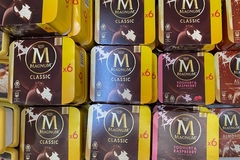
- Industry news
Industry news
- Category news
Category news
- Reports
- Key trends
- Multimedia
- Journal
- Events
- Suppliers
- Home
- Industry news
Industry news
- Category news
Category news
- Reports
- Key trends
- Multimedia
- Events
- Suppliers
Microalgae deep dive: Spirulina, chlorella and tetraselmis poised to infiltrate F&B

31 Mar 2023 --- Microalgae are making waves for their highly nutritious content and status as a natural, plant-based and sustainable “superfood biomass.” But the industry still has a long way to go to bring these ingredients fully into mainstream human consumption, say industry stakeholders. Lack of quality standardization and “unfair competition” from other protein sources – such as soy – bar the up-and-coming category from reaching its full potential.
FoodIngredientsFirst spoke to microalgae suppliers Parry Nutraceuticals, Allmicroalgae and Solabia-Algatech Nutrition, as well as fish analog start-up SimpliiGood, about the ingredients’ unique characteristics and its upstream battle to widespread consumption.
Modern-day applications for ancient species
It has been estimated that there are between 200,000 and 800,000 different microalgae species and out of all of them just a small number are available commercially, says Liat Shemesh, marketing manager for Solabia-Algatech Nutrition.

Namely, spirulina, chlorella and – the more recently approved EU novel food – tetraselmis are being tapped as food sources of protein, iron, B vitamins, fatty acids and antioxidants.
“Spirulina’s history goes back to the Aztecs in the sixteenth century who consumed it for nutritional and healthy benefits,” explains Sofia Hoffmann De Mendonça, marine biologist and Europe business development manager at India-based microalgae giant Parry Nutraceuticals.
“Chlorella has a strong tradition in Japan and also in Germany, renowned for its anti-ageing, antioxidant and detoxifying action as described in several scientific papers. And tetraselmis has basically no history of human consumption since it is a marine microalga (with more demanding cultivation conditions) and wasn’t yet significantly explored as a human food ingredient or supplement.”
 SimpliiGood’s spirulina farm.These ingredients are currently being incorporated into dairy products like cheeses and sports nutrition to boost nutrition and other F&B as natural food colorants. They are also being researched for advanced applications like plant-based fish alternatives.
SimpliiGood’s spirulina farm.These ingredients are currently being incorporated into dairy products like cheeses and sports nutrition to boost nutrition and other F&B as natural food colorants. They are also being researched for advanced applications like plant-based fish alternatives.
Microalgae to support plant-based fish development
Israel-based start-up SimpliiGood, for example, leverages spirulina in its smoked salmon analog, composed of 100% minimally processed spirulina.
The prototype contains 40% complete protein, compared to the more common industry standard of 1%-10%, says Baruch Dach founder and CTO of the company.
Meanwhile, tetraselmis demonstrates great potential for plant-based renditions of sea creatures, even though it is less widely cultivated, divulges João Navalho, president of the board of Necton and Allmicroalgae.
“The smell and taste of tetraselmis are incredible for fish analogs as it has a strong and amazing resemblance to fine shellfish, such as lobster.”
Microalgae can also help provide the right nutrition necessary for plant-based alternatives. Chlorella is known for its vitamin B12 content, an essential vitamin for vegan and vegetarian consumers. And both spirulina and chlorella are known for having strong protein content.
Question of quality
Simpliigood feels bullish about the future of the microalgae market. Dach believes it will grow dramatically to change the human food value chain – because of new applications and necessity.
 Spirulina is the most widely produced microalgae ingredient worldwide.For Navalho though, microalgae has many obstacles to overcome before it can achieve mainstream status.
Spirulina is the most widely produced microalgae ingredient worldwide.For Navalho though, microalgae has many obstacles to overcome before it can achieve mainstream status.
One major barrier is lack of standards. “As most microalgae is grown in the far east, many concerns have arisen regarding food safety, which can be compromised by poor water quality, fertilizer quality and overall cultivation management,” he says.
“Proper standardization and scale need to be established in order to carry microalgae over to mass consumption,” he underscores.
Hoffmann De Mendonça agrees that standardization will be key to the category’s future success.
She explains that many newcomers don’t have the scalability capacity or knowledge to cultivate the microalgae in a consistent, standardized way.
Moreover, the geographical location and the production technology and expertise contribute to the uniqueness of microalga powder’s value and nutritional or functional profile.
“To that extent, the same spirulina or the same chlorella may present different composition based on how and where they were cultivated,” she reveals.
And while Asia may have gained a reputation as a questionable source, she expects this preconceived notion to fall away in the coming years.
“It’s been interesting to see European consumers gradually become more aware that high-quality microalgae can be produced according to the worldwide standards and certifications in the south of India, where environmental conditions are optimal for its cultivation.”
Microalgae on a mission
Aside from standardization, Navalho argues that unfair competition with traditional products, ingredients and raw materials is also a significant challenge to overcome.
“Most food products in the market are subsidized at a production level, even those known to be unsustainable. On the other hand, microalgae production is not subsidized, and producers even need to pay for the CO2 they are using,” he states.
“Moreover, how can microalgae compete, price-wise, as a plant-based protein source with soy produced in farms of thousands of hectares placed in the former rainforest? Or with palm oil produced with a high environmental impact? If soy or palm oil does not pay for its major impact on the planet, it will be impossible for microalgae to compete in the market.”
 Chlorella must be physically cracked or fermented to unlock its nutritional potential.To tackle these issues, Navalho proposes more robust policies that push toward using local ingredient sources and “green” policies to pressure the goods produced in former rainforest lands. “Subsiding strategies are crucial to equilibrate the unbalanced subsidies policy for farmed goods to make competition fairer.”
Chlorella must be physically cracked or fermented to unlock its nutritional potential.To tackle these issues, Navalho proposes more robust policies that push toward using local ingredient sources and “green” policies to pressure the goods produced in former rainforest lands. “Subsiding strategies are crucial to equilibrate the unbalanced subsidies policy for farmed goods to make competition fairer.”
If no policies are made to support scale-up and affordability, Navahlo anticipates microalgae will continue to be restricted to high-value market niches, as those will only be the ones able to pay for the production costs.
Food functionality and foaming
The possibilities for microalgae are plentiful for both functional features and nutrition. Navalho explains that spirulina, chlorella and tetraselmis present good dispersibility at 5%, improved with an increased temperature.
“In terms of water holding capacity, spirulina has a very positive value, close to egg white, followed by our fermented chlorellas, such our smooth chlorellas, which are comparable to pea protein concentrate.”
He adds that autotrophic chlorella and spirulina have shown high foaming capabilities, with spirulina displaying significant foam stability.
“Considering the emulsifying capacity, from the fermented chlorellas, such as yellow, smooth or white, to the spirulina, they all show higher values compared to white egg powder.”
Dach at SimpliiGood adds that spirulina – as an organism comprised mostly of protein and has no cellulose cell walls – offers a wider and more easily accessible range of functions in food than chlorella or tetraselmis, which must be physically cracked or fermented to unlock its nutritional potential.
Spirulina can be used for thickening, stabilization, texturization, as an egg and gluten alternative, binder, gelling agent, natural colorant and much more, he says.
 Blue cold-pressed juice debuted last month in fast casual Clean Juice restaurants in the US. The drink features blue spirulina as a superfood with antioxidant and detoxifying qualities.Deep dive into nutrition
Blue cold-pressed juice debuted last month in fast casual Clean Juice restaurants in the US. The drink features blue spirulina as a superfood with antioxidant and detoxifying qualities.Deep dive into nutrition
Coming from different genera of the Oscillatoriaceae family of algae, spirulina, chlorella and tetraselmis present varied nutritional profiles as well.
“Spirulina and chlorella are similar in terms of the macronutrients,” explains Hoffmann De Mendonça.
Spirulina produced by Parry Nutraceuticals normally presents a higher percentage of protein (60% to 65%) versus Parry’s chlorella, which reaches a level of 55% protein of the total biomass.
“The main differences reside in the fatty acids – spirulina contains gamma-linolenic acid (GLA), whereas chlorella contains alpha-linolenic acid (ALA).”
As for the marine microalga tetraselmis, the protein and lipid percentage are significantly lower compared to the other two genera. However, it contains a small percentage of the high-value fatty acid EPA.
Extracting the goodness from microalgae
Microalgae derivatives also play a vital role in food, often with specific functionality. Phycocyanin extract, derived from spirulina is currently widely used as a natural colorant and is being investigated for its bioactivity as an antioxidant.
Late last year, color supplier GNT secured US Food and Drug Administration approval for the use of spirulina extract in beverages, enabling manufacturers to achieve vibrant blue shades while maintaining a clean label.
“Being a cyanobacteria, Parry’s spirulina contains a very interesting level of phycocyanin (around 6% on a pure basis; 17 to 20% on a crude basis) – the blue pigment responsible for the blue color of the biomass,” says Hoffmann De Mendonça.
“On the other hand, chlorella is the living organism with the highest percentage of chlorophyll – the green pigment, which in Parry’s chlorella attains ≥ 2% of the total biomass.”
In recent years, Allmicroalgae brought white and honey-colored chlorella to the market to promote its acceptability in human food without the strong color and fishy taste.
Although somewhat of a different category, astaxanthin is another high-value ingredient derived from the microalgae Haematococcus pluvialis.
Astaxanthin belongs to the carotenoids family and is one of the strongest known antioxidants, remarks Shemesh. Its main function is in the nutraceutical space with applications for skin, eyes, muscles, brain and immune system health.
By Missy Green










